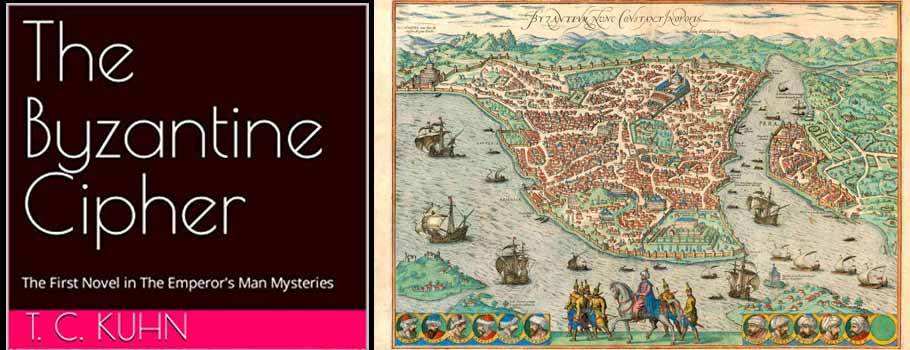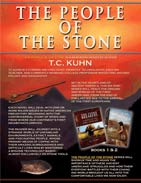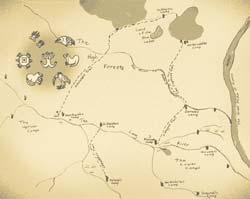An Epic Historical Book Series
A nearly universal interest in the Native Americans has always been a feature of both popular literature and culture as well as professional archeologists, geographers, and historians. Who are they? Where did they come from? When did they arrive? How did their unique cultures manage to survive time and again in the face of overwhelming pressures? Why has their continuing influence on American society, myth, and the national psyche remained so enduring? All these questions never cease to fascinate us as a people, and each new generation of scholars, artists, writers, and school children perpetuate the interest in those we have chosen to call—somewhat ethnocentrically some might suggest—the “First Americans”.
As an anthropologist looking at these questions, it is easy to say that our interest in the peoples who came to live in the Americas before the arrival of the Europeans and others is based upon the diversity of their interesting cultures, languages, etc. We divide the entire region of North America for study into nine distinct culture areas based upon these interesting difference and the “tribes” that occupied those areas at the time the first “settlers” came to the continent’s shores. But, perhaps, our real fascination lies in the fact that in those so-called primitive peoples we see an open window into our own past—a window that had already closed long before in most places of the world where our European ancestors had previously gone. As the different peoples: from conquistador, to missionary, to farmer with a plow, moved into the seemingly never-ending new lands that opened up before them, they gradually began to see whatever reflection they chose to behold in the faces of those prior occupants whose lands they were occupying.
Every attribute of our own perception of them — from the tired remnants of once great but now decayed civilizations, to filthy beggars, to the “noble savage” has been applied to these many cultures of native peoples who have inhabited both Americas for unknown thousands of years. Of course, in reality the truth lies somewhere else. All cultures must be judged relative to their reactions to their own history, environment, and adaptations of those social structures selected as best by them at any point in time. Nevertheless, we frequently seem to want to judge these ancient peoples from our own perspective of time and from the descendants of those former peoples still among us—descendants whose, myths, behaviors, and appearance are often more a reflection of that which we have imposed upon them than that which is truly brought along from their own deep past--a past they have, all too frequently, become just as detached from as we others who measure it.
The books of the People of the Stone Series will be one writer’s attempt to deal with this past of the peoples who first came to inhabit, what was for them also, a “New World” from a perspective that I do not believe has often been attempted. First, as a professional archeologist/anthropologist(but one with a literary background), I have dealt with the reality of the ancient past of North America in particular for many years, both in the field, in the laboratory, and in many levels of the classroom. In between, I also spent seventeen years as a professional craftsman and primitive technologist recreating the lifeways of these ancient peoples from a hands-on perspective, focusing on both the artistic and functional value of the “stones and bones” (the prehistoric equivalent of “nuts and bolts) of traditional cultures and technologies.
With this unique perspective, I believe that I can bring a fresh and exciting look to the important questions of the day and the large amounts of new information of all types relating to the spread of these ancient cultures. I have chosen to set these stories in the great heartland of America along the many river systems that have always provided the life arteries for the social experiments that often began and flourished there. It will be a journey of more than 12,000 years and one which, I believe, the reader will find both enlightening and entertaining in many unanticipated ways. I look forward to sharing these long untraveled paths together with you.
Additionally, an interactive blog has been set-up as part of this on-going project in order to provide current information on the topics covered in the books, as well as other notable subjects that come into the public eye concerning prehistoric North America. It is hoped that the casual as well as the more interested reader will continue to find subjects of interest posted on this blog. All articles are written and researched by the author. However, reader comments and questions are eagerly encouraged.
Recent Blog Posts
- MEGALITHS AND MINOTAURS: OLD SITES, NEW THINGS TO SEE
- KINGDOMS OF STONE: The Second Book in the Maya Trilogy: Preview and Now Available
- JOHN LLOYD STEPHENS AND FREDERICK CATHERWOOD: A MAYA LEGACY NOT FORGOTTEN
- OF FIRE AND ICE: THE REAL "GAME" THAT CHANGED THE HUMAN PAST
- ORDER AND CHAOS: SAVING THE SUN FROM DEATH DURING A TOTAL ECLIPSE
- NEW FRENCH CAVE DISCOVERIES PUSH ART ORIGINS BACK IN TIME: Importance of the Chauvet Cave in Southern France
- PLACE OF THE MISTY SKY: The legend, the new book by T. C. KUHN, and the story behind this important new novel
- ANNOUNCING NEW MAYA BOOK SERIES: FIRST NOVEL COMING IN SEPTEMBER
- ROADS TO EL MIRADOR: A DESTINATION OF IMPORTANCE FOR TWENTY-FIVE HUNDRED YEARS
- EL MIRADOR: MAN MADE MOUNTAINS THAT TOUCH THE SKY







